I’m not a big fan of The Walking Dead: it reminds me too much of certain practices in teaching and education. Students march from stage to stage of their educational experience like a zombie horde. Each stage is more grim and serious than the last. Middle school has more homework because they are preparing you for high school. High school has finals because they are preparing you for college. College has research papers because they are preparing you for life.
Wait… what? I’ve never written a research paper after college. Of course you haven’t and yet it is seen as the ultimate expression of rigor and learning in both high school and college because it’s what you do to earn education’s ultimate prize: the PhD. Ask anyone who has written a major thesis or PhD thesis what it felt like and they’ll say it was something like this.
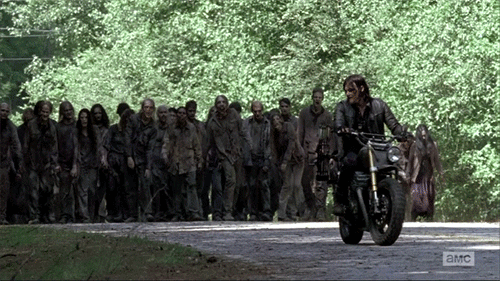
Most zombie movies end tragically for the majority of the actors. What’s funny about research is that research happens ALL THE TIME after college, but it looks NOTHING like a research paper. In “real life” research has to be compelling, has to tell a story, has to be approachable otherwise no one will buy it, listen to it, be convinced by it.
Convincing is crucial in research. A great research report, or research project is a call to action. It’s saying “hey there’s something wrong here, or something you aren’t considering that we should be looking at.”
Here is what research, and the communication of research looks like in real life:
- The OJ Simpson trial spent millions on research, that research was so compelling people watched it and talked about it every day for months.
- Vin Scully of the Los Angeles Dodgers, career has lasted ? years because of his ability to wrap memorable stories around his research on players and teams.
- Companies like Apple computer hope that a spokesperson, Steve Jobs, can sell their researched product.
- My brother-in-law Tyler McQuade, who did his postdoctoral work at M.I.T., and ran a research lab at Cornell, told me that all of his research has to be explained to people with money who normally couldn’t understand his work, but it’s his job to write it up in such a way that they will fund his future research.
- The website Wait But Why (thanks @digitalmaverick) wraps research in fun and compelling stories.
- What If? Science research answered questions like: “From what height would you need to drop a steak for it to be cooked when it hit the ground?”
So if our job as teachers is to get students ready for life, why are we turning our students into zombies by trudging out the same old research paper we did when we were students? Why am I watching students write research papers on brand new chromebooks without using a hyperlink even once? It probably has something to do with habit.
Habit hides zombie ideas. What’s a zombie idea? Zombie ideas are ideas that keep trudging along even if they should have died long ago. Zombie ideas exist in every field, even ecology. (a great read by Jeremy Fox)
I’m not the only one calling for the end of the tyranny of the research paper. Here are two great reads on why we need to move beyond the traditional research paper.

Jason Palmeri on the left and Geoffrey Sirc on the right: I own both of these
Even debate itself is mired in undead traditions. As I washed the dishes last week, I listened to Ryan Wash retell his own battle to upset the privileged experience that enslaves college debate teams. This radiolab episode rips academic debate out of the grave and brings it back into our daily life.
“Heads up, there is a little bit of adult language in this podcast”
So how can we survive this zombie invasion? How can teachers save their students from being devoured by the undead research paper? What we need is a little modification. You’ve seen a zombie movie right? People use things as weapons that you’d never think of using.

My son’s birthday parties will never be the same (Zombieland) Made these GIFs myself using Giphy.

“That’s Liz’s” “Yeah but she did dump you.” (Shaun Of The Dead)
That’s what we need to do in education, a little transformation.
In the old days when a teacher wanted to mix things up a little, to go from paper to keyboard, you’d take your students to the computer lab. Now when we want to write research reports we can bring a cart to class. But if you are just having your students use the chromebook cart as a replacement for a typing tool, you are missing out on some vital opportunities. We need to transform the notion of our chromebook carts, from a tool delivery system to a life saving opportunity.

We need to change our chromebook cart to a C.R.A.S.H. C.A.R.T. Image link
What’s a CRASH CART?
Choose (a topic)
Research
Attract your Audience
Share (with others)
Hone or +1 ONE area of emphasis
Construct
Art
Related
To a Topic
So what’s a CRASH CART look like in a classroom setting? I’ll give you one case study where I mixed some previous ideas: Intellectual Fight Club + Chekhov’s Gun + Wired Magazine Infographics+ Student Choice + Memorable Moments = one of the best teaching weeks I’ve ever had. Here’s a quick sneak peak and then I’ll tell you how I did it.
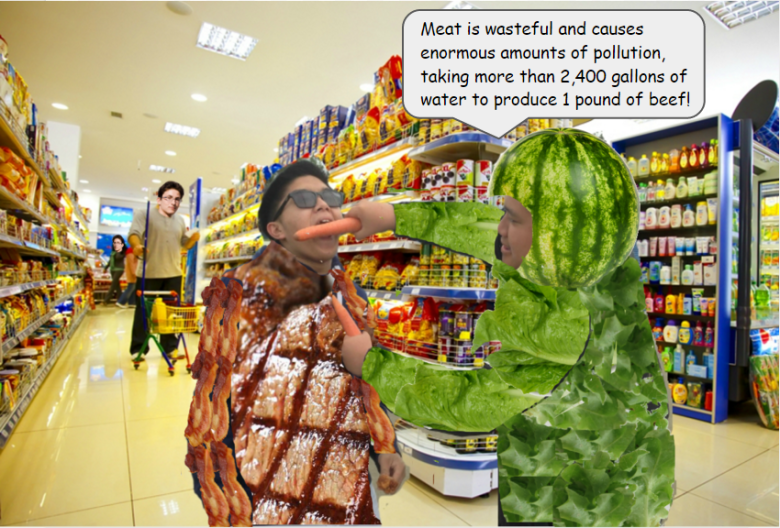
Vegans and Meat Eaters… always fighting
Day ONE: Choose your topic
When my students sat down I had them take out a piece of paper. Waiting on the whiteboard were a selection of controversial topics, things that students might care about.

I had them write down nine choices from above of things that they agreed with or disagreed with. Then I had students who agreed that they should legalize drugs raise their hands, then I had students who disagreed that we should legalize drugs raise their hands. I took the side that had the fewest students, had them come to the middle of the room and then chose the same number of students from the other side and had them square off with each other. I made sure friends weren’t working together, then I had them introduce themselves to their partner and shake hands. I did this until everyone in the room had a partner. Then I had everyone spend 15-20 minutes writing three paragraphs backing up their ideas. Their HW was to finish this if they hadn’t and to make sure they had at least one statistical fact amongst their three paragraphs. When I do this next time, I’m going to have them print out their factual source and spend more time showing them how to find good sources. We’ve done that before in my class and other classes, but it’s never bad to do it again.
Day TWO: Organize the fight and create a storyboard.
Place a blank paper on the desk of each student. Once class starts have them take out their paragraphs. Then ask them to fold their blank paper into six equal rectangles. Then ask them to switch seats and sit with their partner.
- Show them this blog post: Fight Club, A Battle Of Ideas. Explain to them that they will be creating something similar, but BETTER.
- Have them read each other’s paragraphs. Underline the part of each paragraph that you think is crucial to the argument.
- Then number each paragraph and create an overall flow. Which point should go first, then second etc… the order should be back and forth between the combatants. Find a “finishing blow.”
- Draw out what each “attack” will look like. Every paragraph will result in ONE attack and ever attack will result in ONE picture, image, or GIF. Walk around the room and see if anyone needs help with this stage.
- Brainstorm props, costumes, themes and which apps would work well with taking the pictures. Some of the apps we used were PHHHOTO, Google Auto Awesome GIF, Action F/X, PicMonkey, and Giphy (students created a short video and turned it into a GIF using Giphy).
Day THREE: Film Your Fight! (It rained of course)
This was the best. I had students work in groups of four. Two people would film, take photos of one group and then switch. We went outside and my students went to work. I was a little worried once in awhile, but I just walked around making sure everyone was safe and making good choices. I helped one or two groups with some ideas, but almost all of them needed no help at all. Here are a couple of pictures, but they don’t even begin to capture everything I was seeing all at once.
Day FOUR: Chromebook C.R.A.S.H. C.A.R.T.
I brought in the Chromebooks, they sat with their partners and created their presentations in Google Slides. They needed to add dialogue bubbles like in a comic book to include their arguments. I told them that each person was responsible ONLY for their own three arguments and that if their partner left their slides blank it would only affect their PARTNER’S grade. I do NOT punish students who have partners who cheat or who have partners who won’t get their work done, nor will I force students to do their partners work. If you don’t have a plan for how to create group projects without punishing or putting all the work on ONE student then you need to come up with a better plan for your group projects. Students love being in groups, but hate doing group projects. So figure out how to fix that.
Then I gave them that night PLUS one more night to finish their Fight Club “film.” Never give students just one night to do something.
Day FIVE: (actually day six) Showtime
They were awesome. Here are just a few of the slides. There were a TON of awesome slides that I just don’t have the room/time to show.

They had to have an opening slide introducing their topic
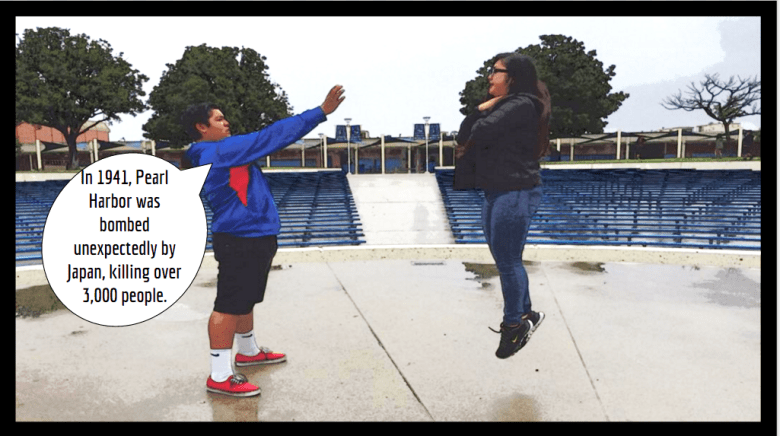
Facts are good, so is Vadering
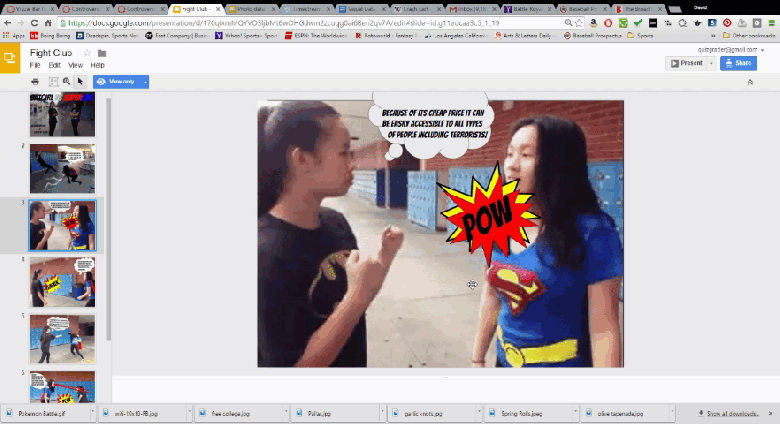
Some students were in costume and used GIFs
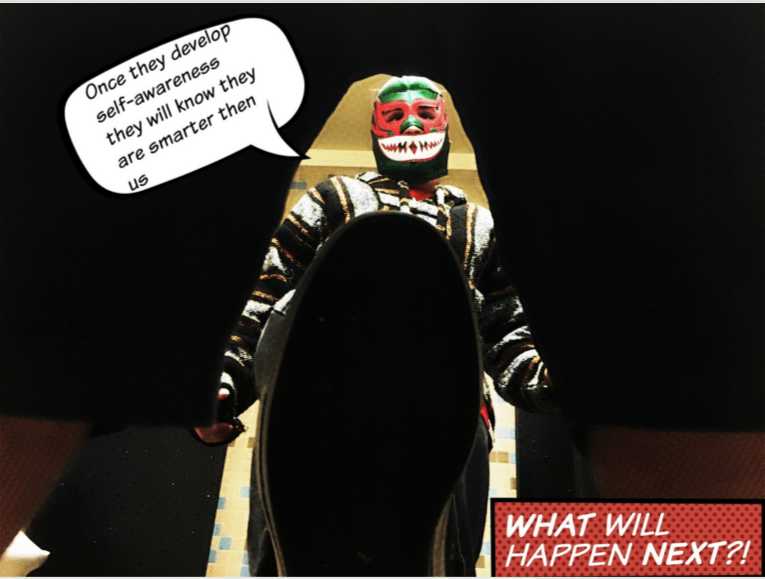
An argument against A.I and a deadly attack

Costumes plus special effects
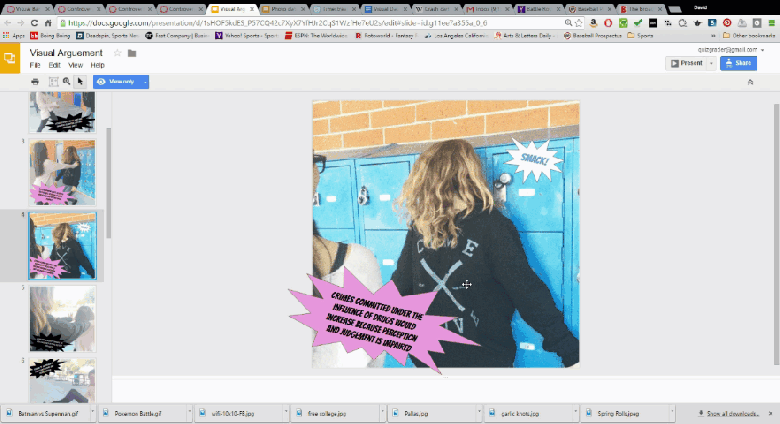
an example using the phhhoto app to create the GIF

This student used a drawing tablet to add special effects
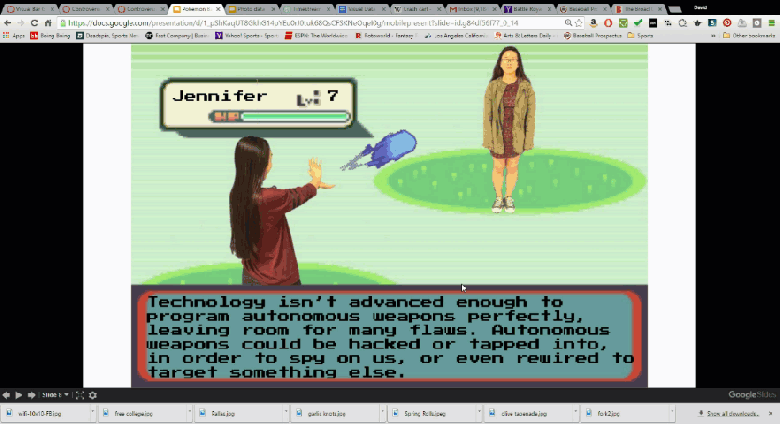
a Pokemon themed battle

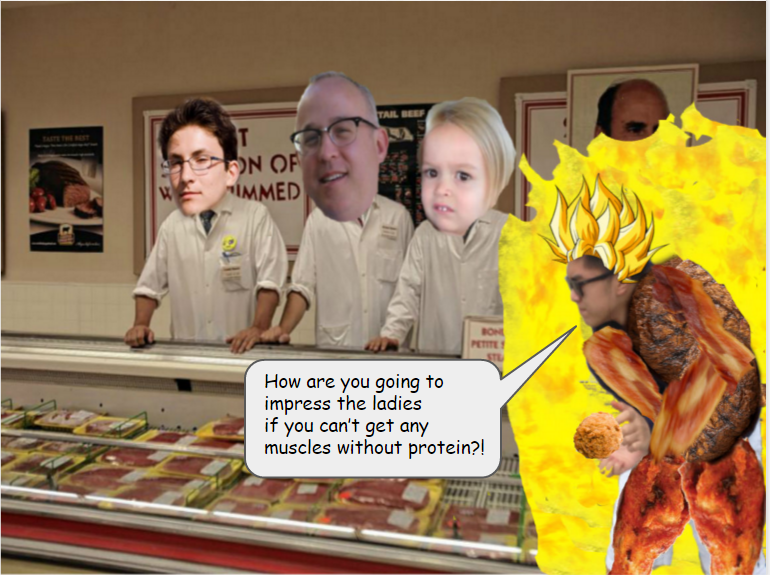
Remember the Vegan vs. Meat Eater slide at the beginning of this post?
If all of the student on student violence is bothering you, of if you have younger students, you could have them bring in action figures or other objects and stage the fight using those objects. These students used a chessboard.

Super original finishing blow coming right up: a fastball special!

Imagine an entire class period of this awesomeness.
But wait. We aren’t done yet… on actual day five I brought them into the computer lab to work on…
Day FIVE: (for real day five) Visual Data Stories
So what the students don’t know… (shhhh) it that they are going to eventually write a research report, but I’m using the Chekhov’s Gun technique to sneak in their learning without them noticing. BWHAHAHAHA. But before we get to the writing we are going to include a statistically line graph in their paper. Research papers actually have images, charts, and graphs all the time, but I rarely see them in an English research paper. Unfortunately graphs are big time boring and your audience rarely remembers them. They usually look like this:
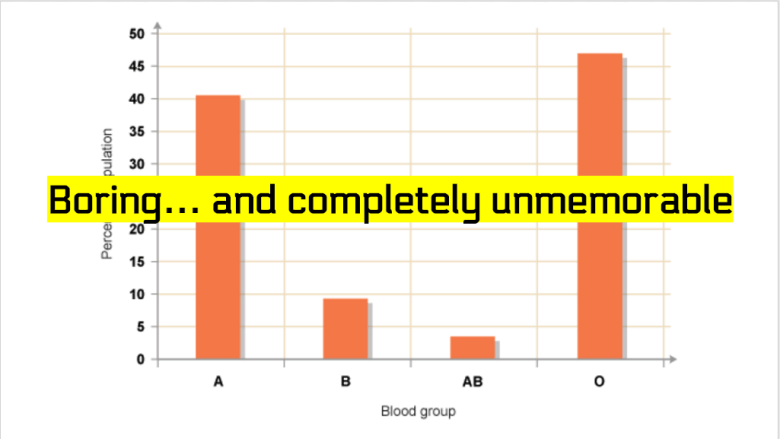
But what if they looked like
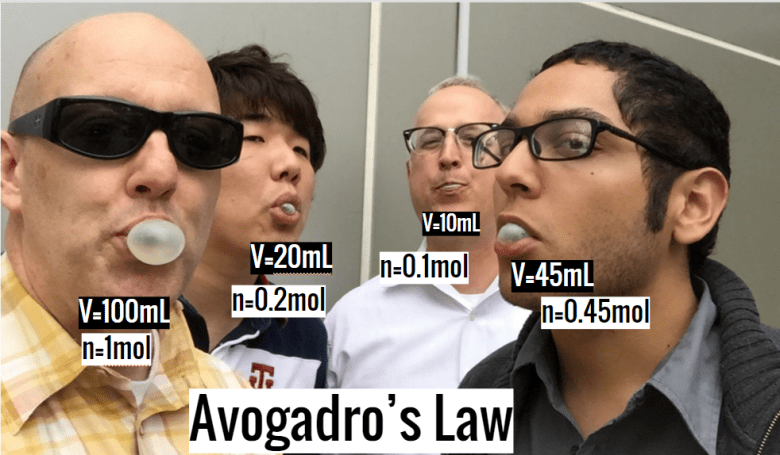
this or
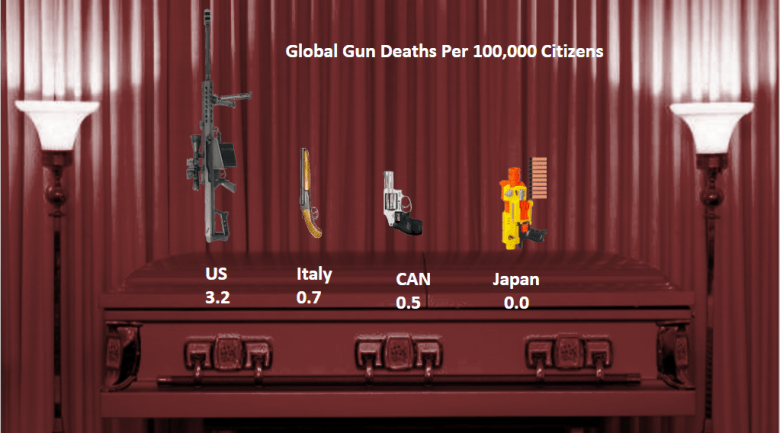
this
So I showed them a Google slide presentation on making Data Visual Stories and then taught them how to use Lunapic to create transparent GIFs for free and had them work in the computer lab for the rest of the period creating their Visual Data Stories. I then gave them a few days to finish them. Here are a few of the finished graphs.

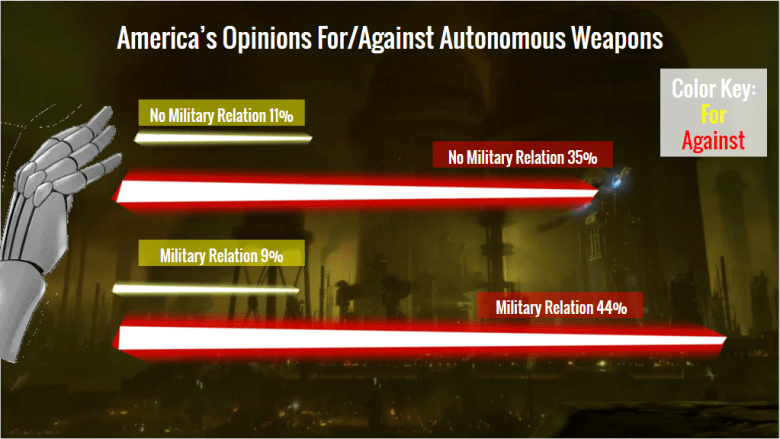
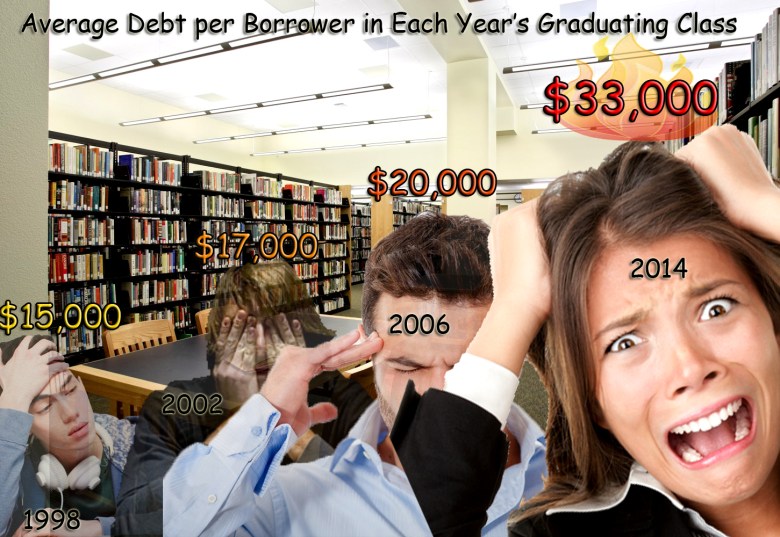

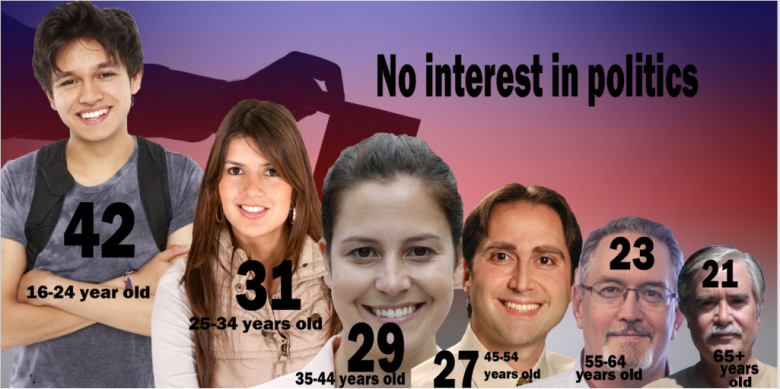
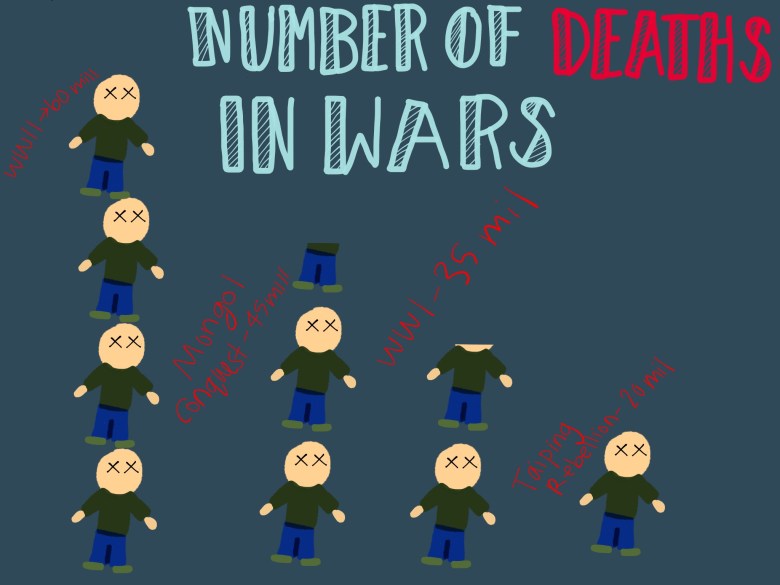
This might be a Paper 53 version.
Day SEVEN: Present the Data Visual Stories
That was a fun day.
Day EIGHT: Magic is about to happen
So on day eight I brought in the Chromebook Carts and told my students they were about to write “The World’s Easiest Research Paper.” (trademarked) They groaned of course. But then I showed them this:
Here are the steps:
- Open up your Google Doc with your three paragraphs
- Open up the Google Doc of your argument opponent.
- Open up the Google Doc MLA template and make a copy of it and title it something about your topic.
- Take your information and cut and paste it into the MLA template. If you want to see an example of a perfectly formatted MLA paper, just click on this example of a MLA formatted research paper.
- Take your opponents information and cut and paste it between the paragraphs of your argument.
- Check your transitions between paragraphs. Make modifications as necessary so it flows.
- Turn your opponents text into text that is italicized.
- Add a picture from your visual argument in a good place in your paper.
- Add the visual bar graph in a good place, where it would fit into your argument.
- Add an introduction.
- Add a conclusion.
- Add your “Works Cited” information make sure it is on a separate page.
- Turn it in. (If you want to get a medium A, high A, or even extra credit, you may need to expand your paragraphs, and/or polish your writing. #justsaying
The NUMBER ONE difference between a real research paper and the kind you do in high school is the originality and quality of the research being cited. In high school you just grab anything that looks good and put it in the “Works Cited.” In college and university it goes something more like this:
1. The best research is the kind you do yourself. You document your entire research process, talk about the construction of your research, your control groups, the validity of your data etc… This is research as a process vs. the typical research paper which seems more like an autopsy of dead facts.
2. Use research that has an expert researchers name as the author of the research. Any facts or data that you use that does NOT have a name attached to it, is suspect at best. This is what your professors will look for in your work cited. If they just see you referencing some random website, then they will shake their heads and think “what do they teach in high school?” The very best research you bring in will also talk about the validity of their data or prove to you why their data or ideas should be trusted. Finding information in a newspaper or traditional magazine will rarely be accepted at the college level because newspapers and magazines rarely link their data to information explaining the process and validity of their information.
***
The students quickly realized that they were more than 3/4 of the way done with the paper. They had created a research paper without even knowing it, thanks to the Chekhov’s gun teaching strategy.
Did it work?
Here’s just ONE of the examples of the World’s Easiest Research Paper that took this student no time at all to put together. It’s about six pages.
So we learned a ton, and it didn’t feel like work. Here are just a few of this skills we worked on:
- Research
- Claims
- Counter-Claims
- Organization
- Transition
- Writing
- Audience Awareness
- MLA Formatting
- Play
- Fun
- Making Learning Memorable or Sticky
- Selling Your Idea
- Collaboration
- Taking Responsible Risks
- Creating
- Re/Mixing
- Applying past knowledge to new situations
- Finding Humor
- Photography
- Using technology to create, present, and solve problems
And here’s the deal. Could we treat this research report as a first draft and work on ANY of the components of a good paper? Of course. How often do you WISH your students had a first draft to work with. Well, here you go. Now could you do something besides a research report with this strategy. Of course you could:
- Make a movie
- Make a more detailed presentation
- Create an infographic
- Have a debate or a trial
- Create a blog post or online article
- Create a comic book
- Or ?
So the next time you hear of someone assigning a normal research report because “it’s what they do in college” grab yourself a CRASH CART, a Chekhov’s gun, something fun and work on making learning memorable.
Google Drive link to more examples from 2018
For making it this far, I’m leaving you a parting gift of a zombie video that two of my students created for their “innovation project” many years ago.






Oh my gosh! This is insane-in a good way! I love your approach to “the research paper” and the step by step you have for each day. I’ve been trying to find an easy free gif making site for my kids but haven’t found any great ones-I’ll definitely check out your suggestion. You bring up so many valid points in your thoughts here, ones that seem so obvious now that you’ve pointed them out! I think it would take my fifth graders longer than a week to do and they probably wouldn’t score well on the district research writing assessment but oh this is so much more relevant, purposeful, and fun! Thank you so much for sharing! I know how time consuming it is to write it all out with examples and links too. Thanks!
1. Thank you for your nice reply. 2. You can still add the “research paper” to address your district concerns. I still think about CCSS, WASC, District Strategic Plan, College Readiness, Career Readiness, SBAC etc… when I lesson plan. Heck we spent a class period just going through an SBAC test with our Chromebooks and having a class discussion on how to approach each question type. Just keep things loose in the clubhouse from time to time or everyone will get too tense on the field.
When your students presented, like with their Visual Data Stories, and their graphs or charts were missing something, did you stop and discuss that with the class or was this an exercise for them to be in charge of presenting their research and process?
Of course we talked about it. I noticed that some of them didn’t label their data, their data lacked context, or it wasn’t the best data to back up their point. And for some students, I was just glad they got it done and that they are working on that skill. I usually comment on presentations right after they are done so we can all learn from the comments.
Also, I hate you just a tiny bit for introducing me to Wait But Why. I have stuff to do, you know.
David – you look awesome as a butcher. You’d definitely be one of those butchers that wouldn’t just be like, “Would you like something else?” but rather, “Hey, what are you planning to do with that 1.5 lbs of ground chuck?” and “Hey, have you ever thought of lamb vindaloo? Oh my goodness, we just made some at home the other day and the memory of it still makes me happy.” Seeing the student work here is just magical, the energy is palpable, and once again you have offered a post that someone can implement tomorrow morning at 8:00 am (assuming the zombies are well-fed and unlikely to nibble).
Thank you.
Reblogged this on GreaterThinking and commented:
test
This is absolutely amazing! Once I do this, the kids will never want to write a research paper for any other teacher. Thanks so much for sharing & for all the details!
Great idea, David. Love the way you push the envelope. You inspired my students to do this Tableau Vivant project https://docs.google.com/presentation/d/1yrnNFRYCjbWEucj2ahJPDukclqlGzqB7MGWYaBtTVAA/edit and a 1st person research paper on the Vietnam War. https://historyrewriter.com/2016/04/18/vietnam-war-narratives/ Love the way you mash everything up. Keep inspiring!
Hey David– I just tried this project this year and wanted to share the first one that just came in: it’s awesome! I just can’t add a picture to show.